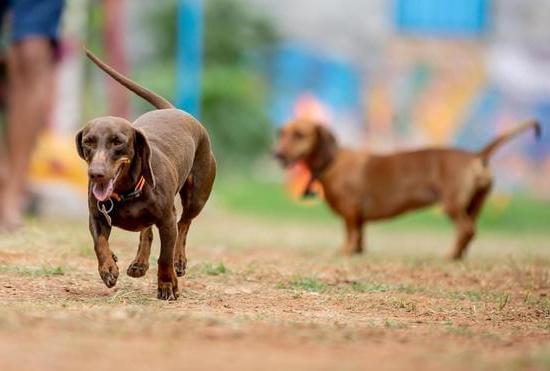Are you struggling with a dog who won’t stop biting? Learning how to train your dog to stop biting me is crucial for both you and your pet’s safety. It’s important to understand that biting behavior in dogs can stem from various reasons, including fear, protection of territory or possessions, feeling unwell, or simply being overexcited. In this article, we will explore effective training methods to address and correct this behavior.
Recognizing the signs of aggression in your furry friend is key in addressing their biting habit. Understanding their body language and behavioral cues can help identify potential triggers and take appropriate action. By establishing clear boundaries and expectations for your dog early on, you can prevent biting behavior before it becomes a serious issue.
Positive reinforcement training methods have been proven to be effective in teaching dogs alternative behaviors. By rewarding good behavior and redirecting negative actions, you can encourage your pup to replace biting with more positive interactions. Seeking professional assistance may also be necessary for severe cases of biting behavior, ensuring the safety and well-being of both you and your pet.
Consistent and persistent training efforts are essential for successfully stopping your dog from biting. In addition, implementing techniques for staying safe during training will help protect yourself while working on correcting this behavior. With the right approach and dedication, you can train your dog to stop biting and create a safe and harmonious relationship between you and your furry companion.
Recognizing the Signs of Aggression in Dogs
Understanding Canine Body Language
One of the most important aspects of recognizing the signs of aggression in dogs is understanding canine body language. Dogs communicate with their bodies, and being able to read their cues can help you identify potential aggressive behavior before it escalates. Signs of aggression may include a stiff body posture, showing teeth, growling, snapping, or raised hackles. By observing your dog’s body language closely, you can intervene and prevent biting behavior from occurring.
Recognizing Triggers for Aggression
In addition to understanding body language, it’s crucial to recognize what triggers aggressive behavior in your dog. Common triggers may include fear, pain, territorial instincts, resource guarding, or feeling threatened. By identifying these triggers, you can take steps to avoid situations that may lead to aggression and address any underlying issues that are causing the behavior.
Seeking Professional Guidance
If you’re unsure about whether your dog is displaying signs of aggression or if the behavior is becoming unmanageable, it’s essential to seek professional help. A certified dog trainer or animal behaviorist can assess your dog’s behavior and provide guidance on how to address any aggression effectively. Additionally, they can offer personalized training techniques and behavior modification strategies tailored to your dog’s specific needs.
By becoming familiar with canine body language, recognizing potential triggers for aggression, and seeking professional assistance when needed, you can develop a better understanding of your dog’s behavior and work towards preventing biting incidents in the future.
Establishing Clear Boundaries With Your Dog
Dogs, like humans, thrive on structure and clear boundaries. Setting clear guidelines for your dog can help prevent biting and aggressive behavior. Here are some tips for establishing clear boundaries with your dog:
- Consistency is key: Ensure that everyone in the household is on the same page when it comes to rules and boundaries for the dog. Inconsistency can lead to confusion for the dog, which may result in behavioral problems.
- Teach commands: Training your dog to obey simple commands such as “sit,” “stay,” and “leave it” can help establish your role as the leader and reinforce boundaries.
- Set limits: Determine what areas of the house are off-limits to your dog and enforce these boundaries consistently. Use barriers or gates if necessary.
By establishing clear boundaries, you are helping your dog understand what is expected of them, which can reduce their tendency to bite or show aggression.
Remember that training takes time and patience. Consistently reinforcing these boundaries will help create a safe and harmonious environment for both you and your furry friend.
Using Positive Reinforcement Training Methods
When it comes to training your dog to stop biting, using positive reinforcement methods can be effective in addressing this behavior. Positive reinforcement involves rewarding your dog for displaying desirable behaviors, rather than punishing them for undesirable actions. This approach helps to strengthen the good behavior and reduces the likelihood of biting.
Consistency Is Key
Consistent reinforcement of good behavior is crucial when using positive reinforcement training methods. This means that every time your dog displays non-biting behavior, they should be rewarded with treats, praise, or playtime. By consistently rewarding these actions, your dog will learn that not biting results in positive outcomes.
Clicker Training
One popular method of positive reinforcement training is clicker training. This involves using a clicker to mark the moment your dog displays the desired behavior, followed by a treat as a reward. Over time, your dog will associate the sound of the clicker with a positive outcome and will be more likely to repeat the behavior.
Utilizing Toys and Distractions
Another way to reinforce non-biting behavior is by providing your dog with appropriate toys and distractions. When you notice signs that your dog may be getting ready to bite, redirect their attention to a toy or engage them in an activity that is incompatible with biting. This teaches your dog that there are more appropriate ways to interact and play without resorting to biting.
By consistently utilizing positive reinforcement training methods such as clicker training and providing appropriate distractions, you can effectively train your dog to stop biting. Remember that patience and persistence are key components of this training approach, but with time and effort, you can help your furry friend overcome their biting behavior.
Teaching Your Dog Redirection Techniques
When training your dog to stop biting, it is important to understand that redirection techniques can be effective in helping them replace the behavior with something more appropriate. These techniques involve redirecting your dog’s attention and energy towards a different activity or object when they display signs of aggression or biting.
Here are some effective redirection techniques that you can use during your training sessions:
- Use toys and chew items: Provide your dog with appropriate chew toys and items to redirect their biting behavior onto these objects instead of on you. When they start nipping at you, firmly say “no” and immediately offer them a toy or bone as an alternative.
- Obedience commands: Teach your dog obedience commands such as “sit,” “stay,” or “down” to redirect their focus away from aggressive behavior. When they exhibit signs of aggression, give them a command to perform, rewarding them with praise and treats when they comply.
- Time-outs: If your dog continues to exhibit aggressive behavior despite redirection attempts, implement a time-out by removing them from the situation for a brief period. This will help them understand that biting and aggression result in the loss of attention and playtime.
Remember that consistency is key when implementing these redirection techniques. It may take time and patience for your dog to fully grasp the concept, so be persistent in practicing these techniques during training sessions.
Implementing these redirection techniques can help gradually modify your dog’s behavior and reduce instances of biting. However, it is crucial to remember that each dog responds differently to training methods, so being patient and understanding throughout the process is essential for success.
Seeking Professional Help for Severe Biting Behavior
If your dog’s biting behavior has become severe and difficult to manage, it may be time to seek professional help. This can be crucial in addressing the root causes of the aggression and finding effective solutions. Professional help can come in the form of dog trainers, behaviorists, or veterinarians who specialize in animal behavior.
One of the first steps in seeking professional help for severe biting behavior is to consult with a certified dog trainer or behaviorist. These professionals have the expertise and experience to assess your dog’s behavior and provide you with a tailored training plan. They can also offer guidance on how to modify your own behavior to effectively address the issue.
In some cases, severe biting behavior may stem from underlying medical issues such as pain or discomfort. In such instances, it is essential to seek help from a qualified veterinarian who can conduct a thorough examination of your dog and rule out any potential health concerns that may be contributing to the aggression.
| Professional Help | Importance |
|---|---|
| Dog trainers/behaviorists | Expertise and tailored training plans |
| Veterinarians | Ruling out medical issues |
Implementing Consistent and Persistent Training
To effectively train your dog to stop biting, it is crucial to implement consistent and persistent training. Consistency is key when it comes to modifying your dog’s behavior. This means that all members of the household should be on board with the training plan and enforce the same rules. Inconsistency in training can confuse your dog and hinder progress, so it’s important to establish a unified approach.
Consistent training also involves using the same commands and cues when addressing biting behavior. For example, if you use the word “no” to discourage biting, make sure everyone in the household uses the same command. This will help your dog understand what is expected of them and what behavior is not acceptable.
Persistence is equally important when training your dog to stop biting. Changing a dog’s behavior takes time and effort, so it’s essential to remain patient and committed to the process.
It’s natural for dogs to revert to old habits, especially during the early stages of training, but sticking with the program will eventually yield positive results. Remember that every interaction with your dog is an opportunity for training, so be persistent in reinforcing good behavior and addressing any instances of biting promptly.
Staying consistent and persistent in your training efforts will help create a safe and harmonious environment for both you and your dog. With dedication and patience, you can effectively teach your furry companion to refrain from biting and exhibit proper behavior.
Tips for Staying Safe While Training Your Dog to Stop Biting
In conclusion, training a dog to stop biting can be a challenging but necessary task for responsible pet owners. By understanding the reasons behind why dogs bite and recognizing the signs of aggression, you can take proactive steps to address this behavior. Establishing clear boundaries with your dog and using positive reinforcement training methods are essential in guiding your pet towards more appropriate behavior.
Teaching redirection techniques can also be effective in steering your dog away from biting behaviors. However, for severe cases of biting behavior, seeking professional help from a certified dog trainer or behaviorist is crucial. Consistent and persistent training is key in ensuring that your dog learns to stop biting and understand what is acceptable behavior.
Finally, it is important for dog owners to prioritize their safety while training their pets to stop biting. This includes using protective gear if necessary, being aware of warning signs from the dog, and avoiding confrontational or aggressive training methods. With dedication, patience, and a focus on safety, pet owners can successfully train their dogs to stop biting and create a harmonious relationship with their beloved pets.
Frequently Asked Questions
How Do You Train a Dog to Stop Biting You?
Training a dog to stop biting involves several important steps. First, it’s essential to teach the dog what is acceptable behavior by redirecting their biting onto appropriate chew toys. Consistency is key, so everyone interacting with the dog should enforce this rule.
Additionally, positive reinforcement when the dog does not bite can help reinforce good behavior. Seeking the help of a professional dog trainer may also be beneficial for more difficult cases.
What Command Stops Dogs From Biting?
The “Leave It” command is often used to stop dogs from biting or mouthing inappropriate items or people. This command teaches the dog to move away or drop whatever they have in their mouth and focus on something else instead. When properly trained, this command can be a useful tool in preventing and stopping biting behavior.
Why Does My Dog Keep Biting Me?
Dogs may bite their owners for various reasons, such as teething, seeking attention, feeling anxious or threatened, or being overly excited during play. Some dogs may also resort to biting as a way of communicating discomfort or pain.
Understanding the underlying cause of the biting behavior is crucial in addressing and correcting it effectively. Consulting with a veterinarian or animal behaviorist can help identify the specific reasons why a dog may keep biting and develop an appropriate plan for addressing this issue.

Welcome to the blog! I am a professional dog trainer and have been working with dogs for many years. In this blog, I will be discussing various topics related to dog training, including tips, tricks, and advice. I hope you find this information helpful and informative. Thanks for reading!





